QB Evaluation: A summary of each prospect in the top 5.
Lawrence, Wilson... after that, it gets murky. Who will it be?
Trevor Lawrence, QB, Clemson
6 foot 6 inches
213 pounds
21.6 years old
36 starts
Junior
The consensus best quarterback in this class, Lawrence’s resume is one that is hard to ignore. Lawrence won the national title game in his freshman season at Clemson, and has been the most recognizable prospect in college football since. Lawrence’s performance has actually stagnated since his freshman year, but he’s still produced at outstanding level in the Clemson spread offense. Lawrence’s counting stats aren’t fully representative of the player, but there’s no doubt that he’s talented.
Positives
Lawrence’s size and arm strength are prototypical for the position, and he pairs it with very good athleticism. His motion isn’t the fastest, but his mechanics are clean and consistent. He can fit the ball into tight windows, he doesn’t hesitate to challenge the entire field. His decision-making is overall, pretty good, and he does a great job in terms of being able to make different throws - his arm talent is elite. He can make touch throws with ease, or fire a drive throw in between a hook and flat zone. I think something seldom mentioned with Lawrence, his mobility is great - on designed runs, he gained the 2nd most yards in this class, only behind Trey Lance. He’s a natural thrower. When asked to go through progressions, Lawrence does have work to do, but he shows good things. His ball placement at times is outstanding and he can make some beautiful throws. In terms of instincts within the pocket, he’s pretty good, but he’s not extremely impressive. His quick decision-making is hard to miss, his realize time is the quickest in the draft, and that’s the type of stuff that does translate to the NFL.
Negatives
Lawrence might have the easiest non-Mac Jones job in college football. Although he was pressured much more than Jones, Lawrence threw the most screen passes in college football last season. Just 40% of his passes traveled beyond the line of scrimmage, which ranks very low among prospects in this class. In addition to that, Clemson’s offense was a gimmicky, college-style offense which didn’t require Lawrence to read the field much. Lawrence showed a tendency to stare down targets quite often, and his accuracy was surprisingly… below average, if not bad throwing downfield. Lawrence’s completion percentage without screen/shovel passes is just 60.8%, For such a highly-regarded prospect, his accuracy, while not terrible, was surprisingly average at best. While much has been made (unfairly) of Justin Fields “processing”, I’m surprised the same hasn’t been said for Lawrence, who had some ugly mistakes. I think he’s got a long way to go in the mental game, but there’s no denying the tools and natural talent that Lawrence does possess.
Summary
At the end of the day, if it were up to me, I don’t know if I would take Lawrence at #1 overall, because I don’t think he’s really the bonafide best QB in this draft. There is definitely an argument for him, but I don’t understand why he’s being touted as the unquestionable #1. But I can understand why the overwhelming consensus would. He’s the prototype at QB, and he’s got the resume and pedigree that makes him hard to pass on. He’s going to probably the best team fit - Urban Meyer’s spread offense will keep Lawrence in his comfort zones and won’t force Lawrence to adapt quickly. I think he’s going to need a bit of time either way, and I suspect he will be turnover-prone early in his career, but regardless, this is a talent that can become an elite QB in the NFL.
Zach Wilson, QB, BYU
6 foot 2 inches
210 pounds
21.7 years old
28 starts
Junior
Wilson has had a meteoric rise throughout this past college football season, and he only gained momentum throughout the draft process. The former three-star recruit from Draper, UT was battling for his job prior to 2020, but once he secured it, he never looked back, on way to one of the most impressive seasons in recent history - even at one point being a dark horse for the Heisman. Wilson is only really being judged on his twelve games this season, but he wasn’t bad in his freshman season either, although his stock from freshman to sophomore year took a tumble - Wilson was at most, seen as a 6th round prospect, prior to this season. It’s been incredible to watch Wilson’s rise, and there’s no doubt that he possesses special instincts and overall ability for the quarterback position. It’s hard to ignore.
Positives
His arm talent jumps off the screen. He’s not the most accurate, nor does he have the strongest arm, but his release is lightning quick and he has a great blend of accuracy and arm strength. He’s instinctual and creative with the ball in his hands, and his control over the ball is fun to watch. Wilson’s accuracy, specifically downfield and into tight windows, is elite, and he pairs it with generally keeping the ball out of harms way. He’s an elusive but not fast runner. I do like his arm, in general, better than Trevor Lawrence’s - he brings the same things to the table, but Wilson’s ability to throw with touch and off-platform is elite. He’s a playmaker, through and through. He does a generally good job of reading the field, and although he had one of the best OLs in college football to throw to, he was good when pressured as well. He flashes the ability to throw with anticipation as well.
Negatives
The questions with Wilson come with his pocket presence and frequency of playmaking. While he’s very good at doing so, he does it far too often - even when the play-design works, or he has a three-man rush/clean pocket to step into, he’s constantly looking to make plays on the move. It’s going to have to be toned down in the NFL - play design is constant, and Wilson isn’t going to be able to run away from DL like he did at that level. I also think Wilson’s pocket presence needs to improve at the next level. He does miss some easy throws at times, but overall, his accuracy is very good regardless. I think he throws far too many 50/50 balls - something that will not translate to the next level, and he has a troubling habit of getting his WRs killed. He makes his WRs adjust quite a bit as well, statistically, of the major QBs in this draft, only Kyle Trask had a higher percentage of forced adjustments.
Summary
Overall, it’s really easy to see why people are high on Wilson. I think he needs work as a pure pocket passer, as he looks more comfortable outside the pocket than inside. While all-time greats like Russell Wilson and Aaron Rodgers are the same, guys like Sam Darnold are too - how will Wilson respond to being pressured more in the NFL? Wilson’s arm talent, mobility, and generally his “QB” traits are great, and although he possesses a smaller frame compared to the other QBs in this class, it’s not a big issue by itself. His injuries are troubling but his medicals have come back clean. Wilson’s quick release and accuracy should lend itself well to the NFL game, and his ability to make throws on the move is something that should be utilized as part of play design on designed rollouts, which BYU didn’t run enough of, in my opinion. If he does indeed go to the Jets, he’s a very good fit in the Shanahan-LaFleur scheme. I worry about his playstyle translating, but if he can become more toned back and calculated with his decisions, he can be a great QB. I think he just needs to learn how to play within structure more consistently.
Justin Fields, QB, Ohio State
6 foot 3 inches
228 pounds
22.2 years old
23 starts
Junior
Fields is probably one of the most polarizing QB prospects in a very long time. People have him anywhere from QB1 to reportedly, a 4th round projection - the latter of which, to me, is absolutely crazy. The quarterback hails from Kennesaw, GA - a suburb in Atlanta, and Fields has been the QB2 to Lawrence’s QB1 since high school - actually, Fields was ranked higher than Lawrence in the ESPN 300 at one point. He is a blue-chip talent. Fields was the consensus QB2 going into this season after a stellar sophomore season in which he was in Heisman contention, following his transfer from Georgia - which had a lot of factors involved. That was not simply a QB competition lost, but we will likely never know the true reasons. With that being said, Fields, as mentioned earlier, was the QB2, and was locked in until this season, specifically his games against Northwestern and Indiana, the two worst games of his career. He followed up his Northwestern performance, however, with possibly one of the greatest single game performances by a QB, ever, against his rival Trevor Lawrence in the Sugar Bowl. Fields threw for 6 TDs and was dominant the entire game, despite having broken his ribs mid-game. It speaks to his toughness.
Positives
Fields, statistically, is one of the most accurate quarterbacks to ever come out of the draft. Quarterbacking isn’t only about accuracy, contrary to popular belief, but Fields accuracy (cough, Chris Simms) should not be questioned. Even though he had two elite WRs in Chris Olave and Garrett Wilson, Fields made tough throws all day long. He possesses prototypical physical traits for the position, standing at a beefy (just under) 6 foot 3 inches, Fields runs a ridiculous 4.41 and it shows up on film. He’s a freaky athlete. Then when you look at his arm talent, he’s got one of the strongest arms in the class. He’s got good lower body mechanics and I like his ability to get outside and throw on the move. Elite runner with the football. Elite intermediate accuracy, there’s not a QB that’s more impressive between the 10-20 yard line than Fields. He goes through progressions correctly for the most part, and he doesn’t get baited into throws the way that Trevor Lawrence does at times. Good deep ball accuracy, but I’d like to see Fields uncork it a bit more downfield. He’s really balanced in the pocket and as a runner, routinely shaking off leg tackles.
Negatives
His decision-making speed is a problem. It’s not actually making decisions, it’s the speed at which he does it. Fields is the only QB in this draft to take longer to throw it against pressure than in a clean pocket, and this is while also having longer to throw. He’s not good under pressure - in terms of passer rating, by far the worst under pressure at just a 40.3 passer rating. For reference, Trey Lance and Mac Jones were above 100 with a similar raw amount of dropbacks under pressure, and Zach Wilson and Trevor Lawrence were in the 90 range. He can be oblivious at times to the rush, and while this allows him to keep his eyes downfield, he takes some absolutely brutal hits in the pocket as a result. Most of his interceptions come because of his affinity for holding on to the ball. While this is impacted by Ohio State’s scheme not exactly being quick decision based, Fields regardless needs to get quicker, independent of scheme. It’s a weird thing to say for a 4.41 40 yard dash runner, but he plays slow. His release not being as fast as say, Zach Wilson or even Trey Lance, requires him to be a tick faster in decision making, and that’s not the case as of right now. This is coachable.
Summary
There is a ton, a ton to like about Fields. His physical gifts paired with his accuracy and ability to read the field correctly (not necessarily quickly) is a devastating combo, and it’s clear to see why Ohio State had so much success with him. But he’s going to have to become a lot better playing under pressure, as he relies far too much on his physical gifts instead of his mental gifts, which has led to bad performance under pressure and an astronomically high sack rate at Ohio State. If Fields can be coached to make quicker decisions, have better pocket presence, and possibly quicken his release, the sky is the limit. Fields is likely going to take a lot of sacks early, but make no mistake - if you give Justin Fields time and a clean pocket, he will pick you apart.
Trey Lance, QB, North Dakota State
6 foot 4 inches
224 pounds
20.9 years old
17 starts
Redshirt Sophomore
A lot has been made over Lance’s relative inexperience - just 17 starts, and not many throws - not to mention, the youngest QB in the draft. Well, it’s not exactly his fault he could not play - the FCS Walter Payton award winner was scheduled to play Oregon this fall, a D1 college with presumptive top three pick in 2022 Kayvon Thibodeaux - until COVID-19 hit. The FCS cancelled their fall season on short notice, and left NDSU and Lance with just one game this fall as an exhibition, while also cancelling late enough that Lance could not transfer to another school. It’s worth noting that if Lance had been able to play this season, he would at minimum have been tied with Zach Wilson for the 2nd most starts in this draft class. But you can’t evaluate what you haven’t seen, which simultaneously makes Trey Lance so intriguing but also so dangerous to some. There are zero character concerns, and according to Adam Schefter - the 49ers believe that Lance is the smartest quarterback in this draft. Indeed, Lance was given the most responsibility of any quarterback in the nation at North Dakota State in terms of game preparation, making NFL-style reads and calls at the line, and more. The former three star recruit was seldom recruited out of Marshall, MN, after a recruiting disaster at Minnesota in which the coach classified him as an athlete - Lance was, at the time, the #1 QB recruit in the state according to 24/7. Instead, Lance chose to attend NDSU, and one FCS Championship later, he’s in this draft.
Positives
There’s no getting around it, Lance is arguably the most physically gifted QB in this class. With elite arm strength, size, strength, and speed - while Fields is really close in this regard, Lance, I believe, has a better overall combination when you add in his elusiveness as well. His release is quick although it can be tightened up a bit more (Again, old tape), and his footwork, especially under center, is quite good. He possesses elite pocket presence and pairs it with elite short accuracy, according to my charting system and Derrik Klassen’s charting system - and while he has a low sample size, his biggest positive is his decision making. 0 interceptions, and just 5 total turnover worthy throws in 318 attempts, easily the best ratio in the class. His deep accuracy is above average, although the eye test suggests he can get a lot better - his arm strength and arc that he gets on the ball would be proof. He’s also ultra-aggressive as a passer, with the highest average depth of target in the class, and the second highest deep ball attempt rate, second only to Trevor Lawrence. Lance targets past the sticks on 3rd down around 84.4% of the time, an absurdly high number considering the next comparable would be Justin Fields at 64% - and Lance did this with the highest percentage of third down attempts charted. What does that mean? He played defenses expecting him to pass at the highest rate. Lance also lost just two fumbles in his career despite having rushed 160 times - a necessity in the infamous NDSU system (they rushed Carson Wentz nearly ten times a game for reference, and the same goes for Josh Allen - also from the NDSU coaching tree at Wyoming). Lance is outstanding on designed runs and read option plays, and while he didn’t have many RPOs due to the NDSU system being under center quite a bit, he performed well on those plays as well. Lance is a powerful and elusive runner, who doesn’t possess elite top speed like Fields, but easily shakes off leg tacklers similarly. He’s very good when pressured, posting the 2nd highest passer rating in the class behind Mac Jones when pressured.
Negatives
Lack of sample size is the root of almost all of his issues. Lance was hurt most among these top 5 QBs by COVID-19. Lance has inconsistent accuracy to the intermediate area specifically - an issue stemming from mechanical flaws, namely, an overstride. Now, again, this is lack of play more than anything else. But you can’t judge what you haven’t seen - Lance’s inconsistent accuracy especially downfield is troubling. It’s fixable, stemming from a lower body mechanical issue, and Lance’s lack of experience is clearly a big factor as mentioned earlier. Will he get better? The Josh Allen comparison is used often, but Lance is better than Allen in terms of accuracy coming out - without a doubt. Many QBs, such as DeShaun Watson, Patrick Mahomes, and others have improved their accuracy with similar mechanical fixes entering the NFL, but again, it’s an unprecedented evaluation and we just don’t know where Lance is in this regard. He can do a better job of sliding in the pocket and looking to throw, rather than ditching the pocket and trying to make plays on the move/running with it all the time. Lance had 1000 yards on designed runs, so he’s not a frequent scrambler, but Lance has never slid in his career and needs to learn how to protect himself from hits. He needs to get better throwing with touch inside the numbers. On longer-developing routes, he has adequate anticipation, but he can get better at getting rid of the ball quicker, which is necessary in the NFL. He needs to be more confident in his arm and be more confident in his ability to make tight window throws.
Summary
Trey Lance is an unprecedented evaluation, but at the same time, what we have seen on film is a very-well rounded prospect with incredible upside. Lance’s only glaring weakness is his inconsistent downfield accuracy - a big weakness. Can he fix it? When his mechanics are on-point, he’s hitting his throws - if he can fix the lower body mechanics (or already has), that goes a long way. That remains to be seen, but if he does, watch out. Overall, his tape isn’t “raw”. He’s a great decision maker with elite athletic traits - that will take you a long way in the NFL. It’s just playing more. The risk is there with Trey Lance - one of the most inexperienced QB prospects in recent history, and also the youngest, but the upside is tremendous.
Mac Jones, QB, Alabama
6 foot 3 inches
214 pounds
22.7 years old
17 starts
Senior
The controversial QB from Jacksonville bided his time at Alabama, patiently waiting until the job opened up - with Tua Tagovailoa off to the NFL. He never looked back, en route to one of the best (traditional) statistical seasons ever. Jones, the former Kentucky commit and now infamous tennis player, has had some character issues - with a DUI in which he crashed and presented a fake ID in his freshman year, but since, has been mostly clean. Jones is a traditional pocket passing QB, often compared to Matt Ryan and Kirk Cousins - so it’s easy to see why people believe Jones will be the selection.
Positives
Mac Jones is an accurate QB. First and foremost - with good short accuracy, great intermediate accuracy, and above average deep ball placement (his stats are misleading), Jones does a good job of giving his WR a chance on every play. Although his completion percentage was inflated by throwing the 2nd most screen passes of anyone in college, there’s no doubt that Jones can play. He’s got elite pocket presence and can slide in the pocket while resetting his feet, and that’s an incredible trait to have in the NFL. A quick decision maker, Jones’ internal clock is always on point and he knows where to throw it when pressured. Jones has adequate arm strength and can really drive the ball when he gets his feet into it, but overall, he’s a touch thrower, not a drive thrower. And that’s not a bad thing. Jones is an aggressive passer that will take deep shots, and although he had elite WRs at Alabama, should be able to hit deep shots in the NFL as well.
Negatives
Lack of athleticism and overall physical traits. It’s hard to get around - Jones’ mechanics go absolutely haywire when throwing on the move. He’s not going to be the type of QB that extends plays in the NFL, regardless of his pro-day numbers. Jones’ deep ball accuracy and overall accuracy isn’t outstanding like Justin Fields - Devonta Smith and Jaylen Waddle led college football in catch rate over expected, meaning they bailed him out the most of any QB in CFB. He was more of a game-manager than a playmaker at Alabama, with the extreme concentration of screen passes, shovel passes, RPOs - his RPO+play action rate was one of the highest ever, which speaks to the scheme more than the player. Over 1000 of his yards were from screen passes alone, so again, how will his numbers really translate? Jones also has a tendency to drop his eyes against pressure - it works because it helps him adjust with his great feet under pressure, but it also causes him to miss some wide-open reads. He’s also been baited by underneath zone defenders often at Alabama.
Summary
Overall, a great pocket passing QB with a lot of traits that the successful pocket passers in this league have, Jones is not hard to see in the 49ers offense. The problem comes with lack of reps under center: Jones has been under center for 2% of his passes in college, and quite literally has never done a three-step drop in game. His physical traits and overall ceiling as a player are limited, and he struggles to throw outside the numbers - rarely doing so, and not doing it well when asked to do it. He presents the same limitations that Garoppolo does to a lesser degree - and if that’s what Shanahan desires, so be it. He’s not a bad player, he’s a pretty good one. But I find it hard to imagine Jones’ play surpassing what is expected, considering the price to acquire. When the play design is working and everything is going according to plan, Jones is a masterful executor.

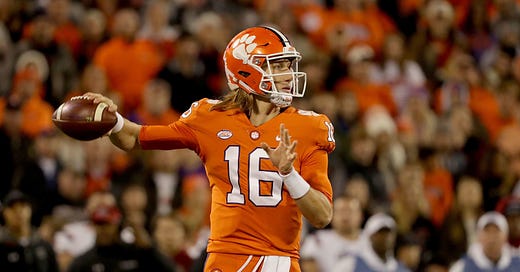



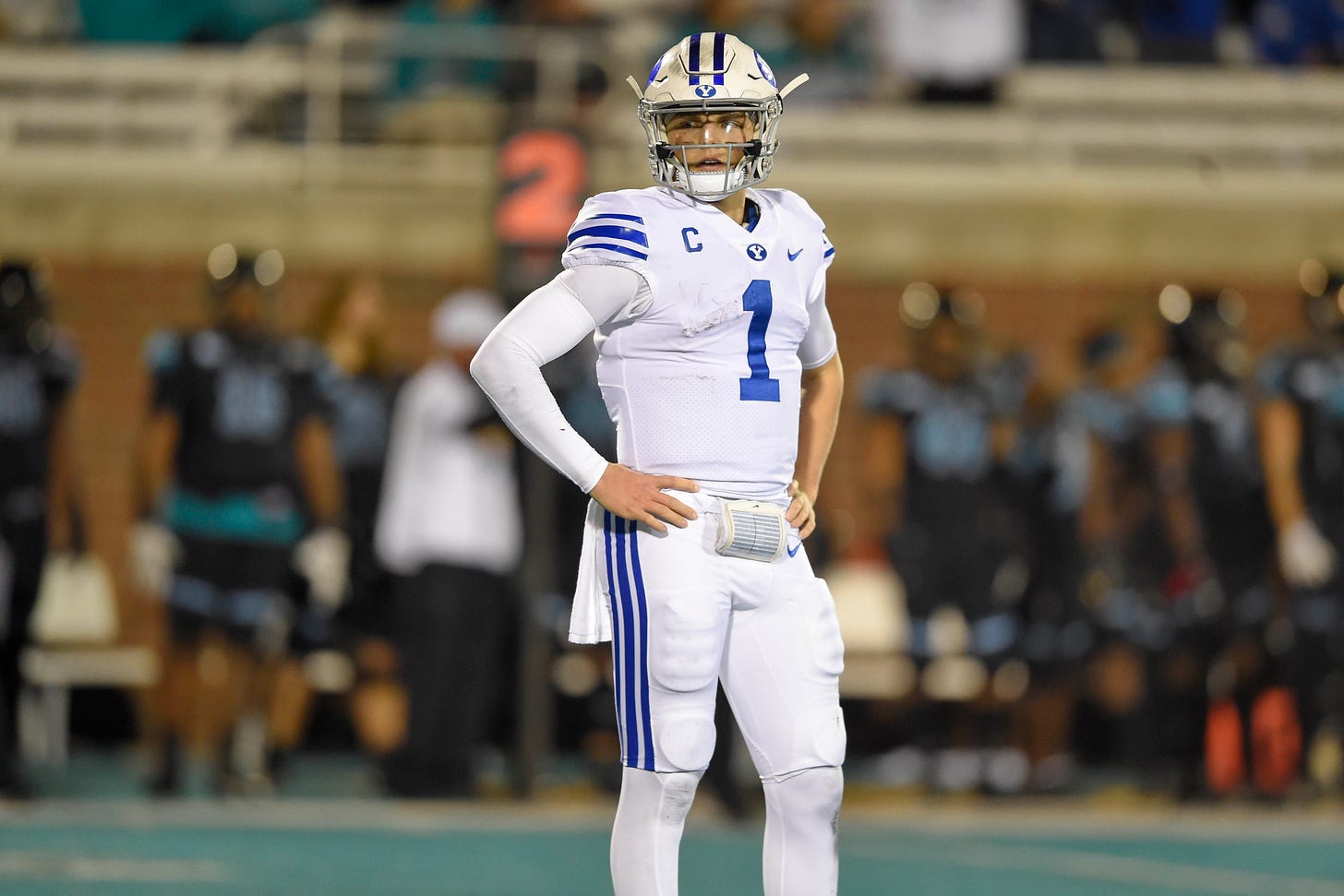
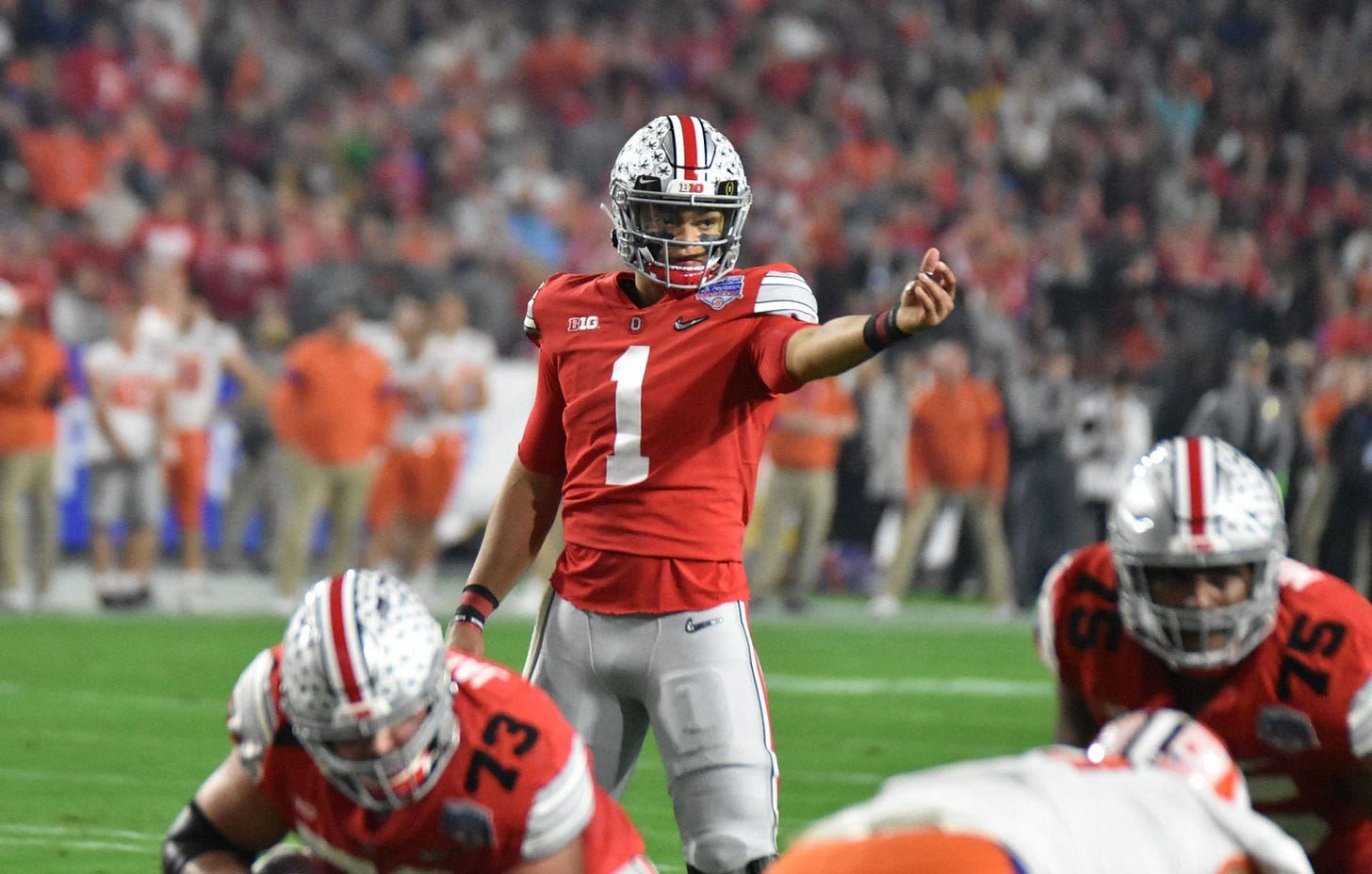
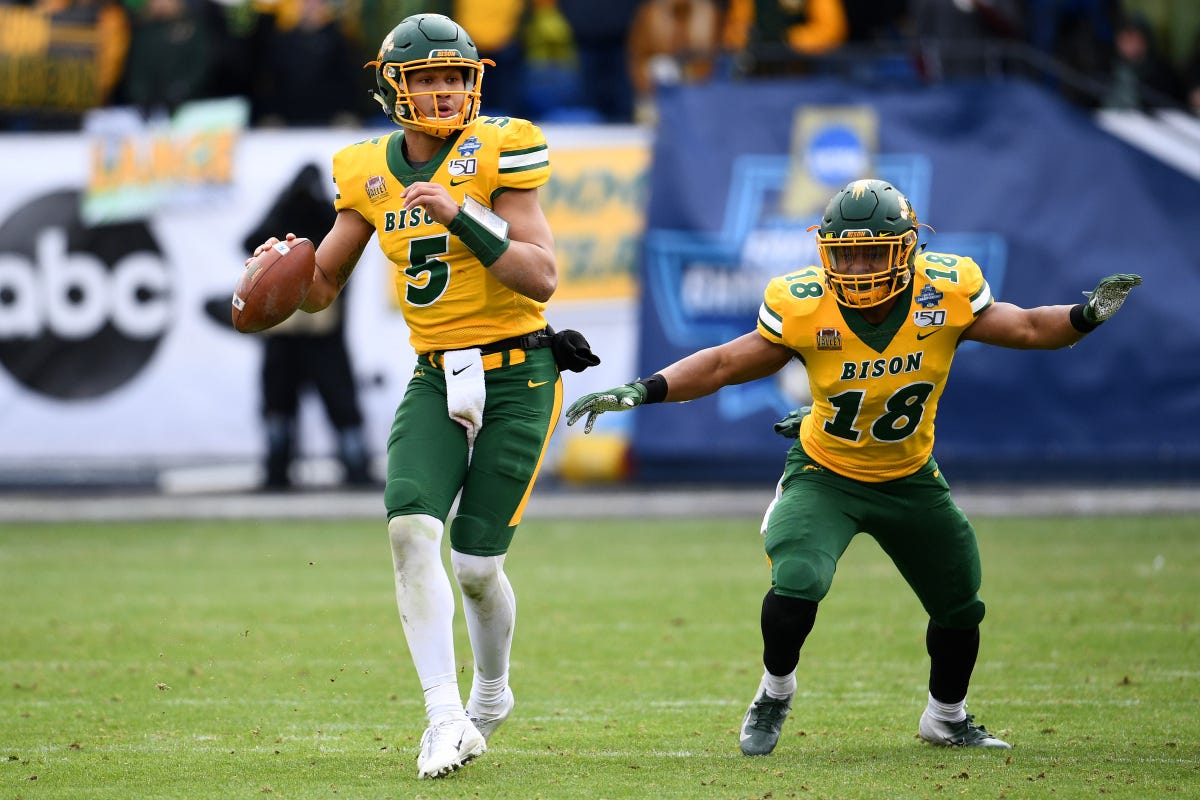
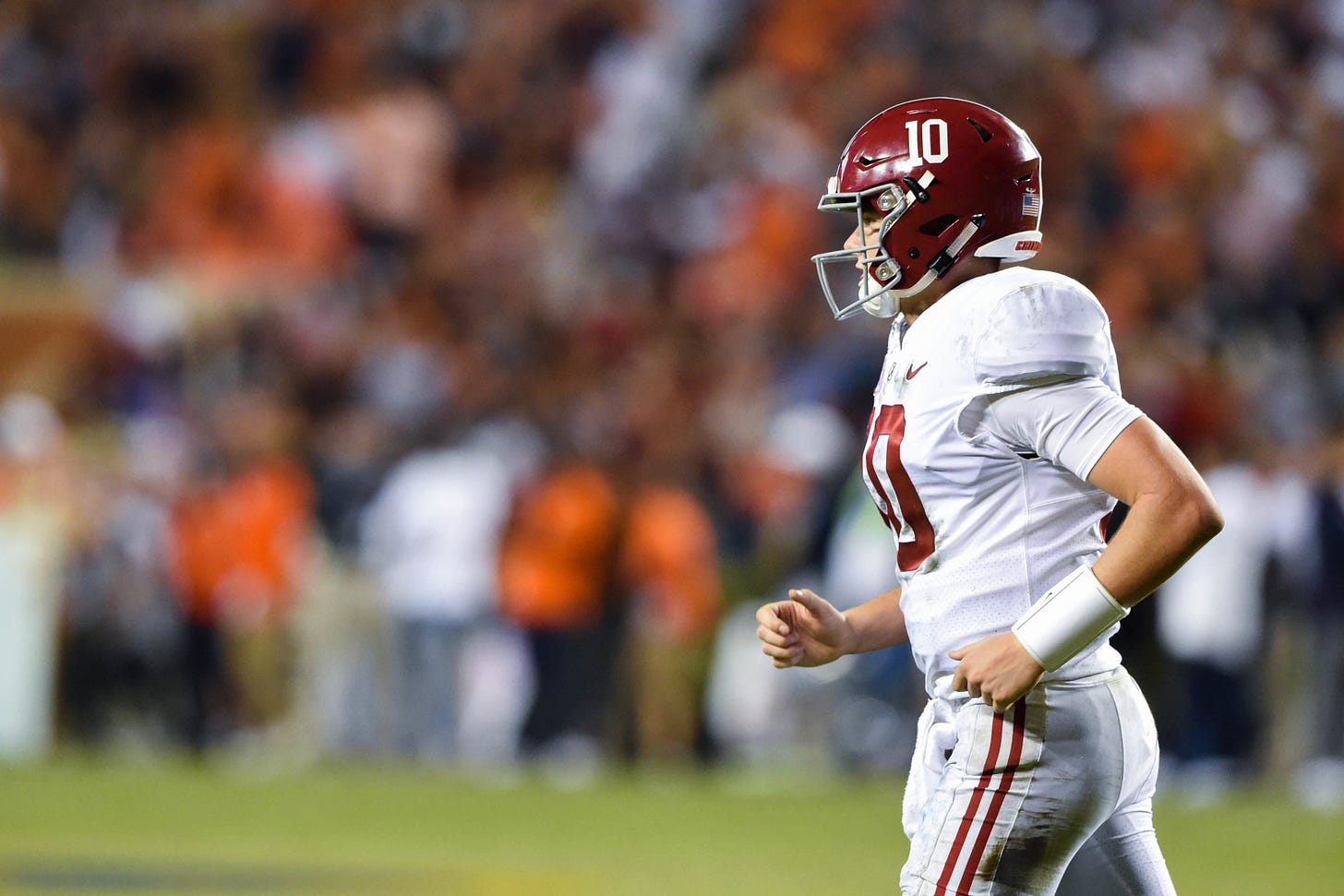
Serious question: Can you name one QB who came into the league and was coached in making quicker decisions? I genuinely don't believe mental processing speed is any more coachable than a 40 time.